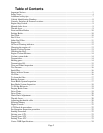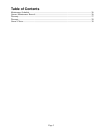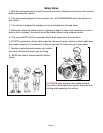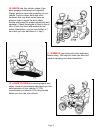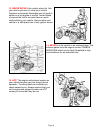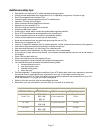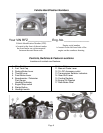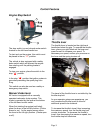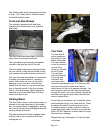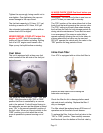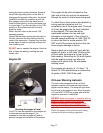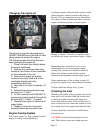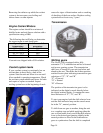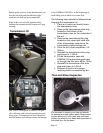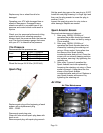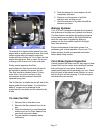
Page 10
The throttle cable should be adjusted so there
is 2mm, (1/8”) free travel at the lever before
the throttle starts to open.
Front and Rear Brakes
This vehicle is equipped with dual front
hydraulic Disc brakes and a rear hydraulic
disc brake
The front brakes are controlled by the long
brake lever on the right-handle bar.
The rear brake is controlled by foot peddle
located in the right foot well of the unit.
The rear brake is the primary stopping brake
on your vehicle. Using the rear brake to stop
your vehicle will prevent steering control loss.
Use your front and rear brakes in combination
to control your speed while descending a
grade. Use caution not to apply too much
pressure to your front brakes so that the
wheels lock up, stop turning, and causing a
loss of steering control. If the front wheels
lock up, and stop turning, lightly reduce the
pressure on the front brake lever until they
unlock and start to turn
.
Parking Brake
The front brake, shown in the picture below, is
located on the right hand side of the handle
bar. The parking brake is engaged by moving
the lever to the right and disengaged when by
moving the leer to the left.
The parking brake should be engaged when
ever the unit is not in operation and when
starting the unit.
Fuel Tank
The fuel tank fill
cap is located on
top of the unit just
ahead of the seat.
The cap contains
a vent to prevent a
vacuum from
forming in the tank
as fuel is used.
The vent tube
must be attached
to the cap and
inserted in the
vent tube holder
hole while operating the unit. The fuel cap vent
and vent tube must be clean and clear of
obstructions for the unit to operate normally. You
can check the vent and vent tube by blowing air
through the tube. If you can not blow through the
vent tube and cap you must clean the vent and
tube or replace them.
Every time you refuel your unit, check the rubber
seal inside the cap for cuts, tears and dirt. Clean
or replace the seal if it becomes worn or torn.
The seal must be in good condition to insure a
proper seal of the cap to the tank to prevent fuel
spills. DO NOT allow dirt or other debris to enter
the tank when refueling.
Replace the cap if damaged or if it will not seal
to the tank.



